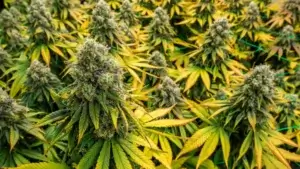Definition
The small, resin-coated leaves that grow near the buds of a cannabis plant, often trimmed during harvest to improve the appearance of the flower.
Purpose and Usage
Sugar leaves are valued for their trichome content, which makes them suitable for extraction or crafting cannabis products like edibles, tinctures, or hash. They are less potent than buds but still contain cannabinoids and terpenes, offering a way to reduce waste and maximize the plant’s utility.
How It Relates to Cannabis
- Found close to the flower, coated in trichomes, giving them a “sugary” appearance.
- Typically removed during the trimming process to enhance the visual appeal and quality of cannabis buds.
- Used in creating cannabis concentrates, edibles, or pre-rolls due to their lower cannabinoid content compared to buds.
- Can be smoked or vaped, though less desirable due to harsher smoke compared to flower.
- Stored separately from buds to preserve their integrity for specific uses.
Common Misconceptions
- Sugar leaves are waste: While not as potent as buds, they have a range of uses and are not discarded in most cases.
- Sugar leaves are as strong as buds: Their cannabinoid content is lower, making them less potent.
- Cannot be consumed directly: While not preferred for smoking, sugar leaves can be used effectively in other cannabis products.
Alternatives
- Trim: A broader term for all leaves and small plant material removed during processing, including sugar leaves.
- Fan leaves: Larger, non-resinous leaves primarily used for plant photosynthesis and not typically consumed.
- Shake: A mixture of broken buds and leaves, including sugar leaves, often used for pre-rolls or edibles.
Importance of Sugar Leaves
Sugar leaves are a valuable byproduct of cannabis cultivation, providing an economical and sustainable option for creating concentrates, infusions, and other cannabis products. Understanding their role ensures that every part of the plant is utilized efficiently, reducing waste and enhancing the overall value of cannabis harvests.





